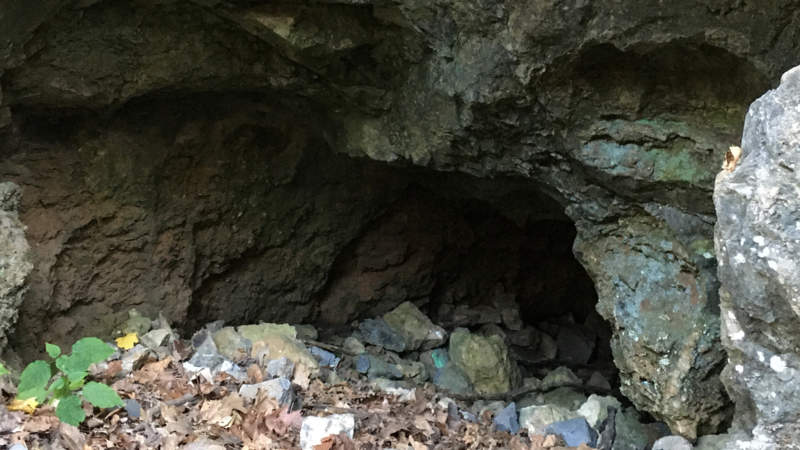The once fossil-rich Cumberland Bone Cave is located along the western slope of Wills Mountain, visible right along the GAP outside of Cumberland. The entrance to the cave is closed off to visitors, but the system extends more than a hundred feet straight down, with chambers winding horizontally several hundred feet in several directions, and is used as a site for geologic and paleontologic research.
Discovery of Fossils and Bones
Workers laying track for the Western Maryland Railway in 1912 unearthed bones while excavating the side of Wills Mountain. Paleontologists from the Smithsonian Institution soon commenced a careful five-year study, eventually recording 41 genera of mammals, some 16 percent of which were considered extinct. Skeletons of an extinct cave bear and saber-toothed cat have long been on exhibit in the Ice Age Mammal exhibit at the National Museum of Natural History in Washington, D.C. Further exploration has revealed scores of fossils from invertebrates and birds, and ongoing published research continues to reveal new clues as to the landscape and life from the Pleistocene era in eastern North America.
Visitor Information
The cave isn’t open to the public, but travelers can pause and peer in to the modest opening anytime dawn to dusk. The closest parking is in nearby Cumberland.

